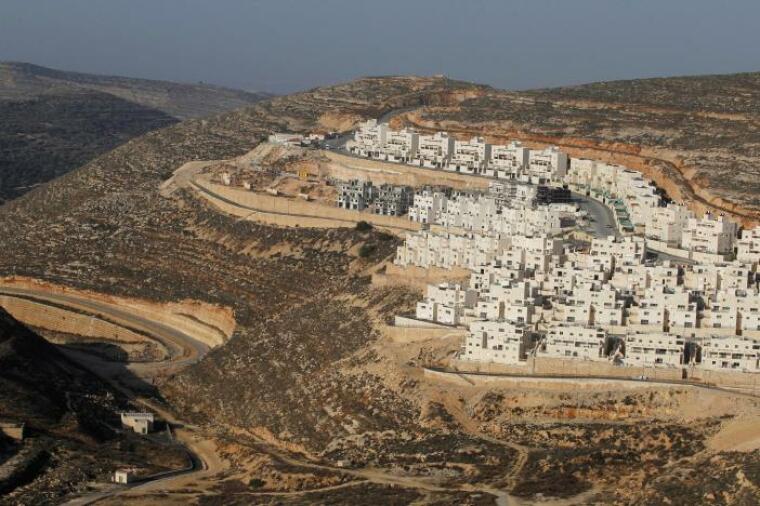Ancient menorah, cross carvings discovered by Hannukah hikers in Israel

Spelunkers exploring on Hanukkah, which in 2016 also fell on Christmas day, stumbled upon a seven-branched menorah and a cross etched into a wall inside a cave in Israel.
The hikers — Ido Meroz, Mickey Barkal, and Sefi Givoni, who are members of the Israel Caving Club — made the discovery while exploring subterranean passages in the Judean lowlands located in South-Central Israel.
"Just before we were about to return we suddenly noticed an engraving that at first glance seemed to be a menorah. When we realized this is an ancient depiction of a menorah, we became very excited. Its appearance was quite distinct," Meroz said in a statement, as reported by Times of Israel.
The Israel Antiquities Authority (IAA) revealed in a statement last Tuesday that the symbols are around 2,000 years old, and they were possibly created hundreds of years apart, even though they were carved close to each other.
The cross may have been carved on the wall during the Byzantine Period in fourth century A.D. Meanwhile, the menorah, a candelabrum with seven arms and three feet, is believed to be an ancient symbolic piece dating back to the Second Temple Period of Jerusalem some 200 years earlier.
Sa'ar Ganor, an IAA archaeologist who studied the engravings, said, "It's rare to find a wall engraving of a menorah," adding that it is a distinct Jewish symbol during the Second Temple Period. According to IAA, there are only two other menorah engravings known in the Judean Shephelah region — one is in an oil press at Bet Loya, and the other is at a burial complex around Bet Guvrin.
The archeologist shared that it is highly likely that the recently discovered carvings are authentic judging by their location — a cistern that is difficult to access — the patina inside the etchings, and their consistency with the history of the site.
The hikers also found a key carved into the bedrock and other symbols that are yet to be identified in the area. Researchers are already studying them, and they are expected to do further exploration in the region.
The hikers who discovered the ancient etchings are set to receive a good citizenship certificate and invitations to participate in archaeological surveys in the region to be conducted by IAA.
 Christians don't have to affirm transgenderism, but they can’t express that view at work: tribunal
Christians don't have to affirm transgenderism, but they can’t express that view at work: tribunal Archaeology discovery: Medieval Christian prayer beads found on Holy Island
Archaeology discovery: Medieval Christian prayer beads found on Holy Island Presbyterian Church in America votes to leave National Association of Evangelicals
Presbyterian Church in America votes to leave National Association of Evangelicals Over 50 killed in 'vile and satanic' attack at Nigerian church on Pentecost Sunday
Over 50 killed in 'vile and satanic' attack at Nigerian church on Pentecost Sunday Ukrainian Orthodox Church severs ties with Moscow over Patriarch Kirill's support for Putin's war
Ukrainian Orthodox Church severs ties with Moscow over Patriarch Kirill's support for Putin's war Islamic State kills 20 Nigerian Christians as revenge for US airstrike
Islamic State kills 20 Nigerian Christians as revenge for US airstrike Man who served 33 years in prison for murder leads inmates to Christ
Man who served 33 years in prison for murder leads inmates to Christ


 Nigerian student beaten to death, body burned over ‘blasphemous’ WhatsApp message
Nigerian student beaten to death, body burned over ‘blasphemous’ WhatsApp message 'A new low': World reacts after Hong Kong arrests 90-year-old Cardinal Joseph Zen
'A new low': World reacts after Hong Kong arrests 90-year-old Cardinal Joseph Zen Iran sentences Christian man to 10 years in prison for hosting house church worship gathering
Iran sentences Christian man to 10 years in prison for hosting house church worship gathering French Guyana: Pastor shot dead, church set on fire after meeting delegation of Evangelicals
French Guyana: Pastor shot dead, church set on fire after meeting delegation of Evangelicals ‘Talking Jesus’ report finds only 6% of UK adults identify as practicing Christians
‘Talking Jesus’ report finds only 6% of UK adults identify as practicing Christians Mission Eurasia ministry center blown up in Ukraine, hundreds of Bibles destroyed: 'God will provide'
Mission Eurasia ministry center blown up in Ukraine, hundreds of Bibles destroyed: 'God will provide' Church holds service for first time after ISIS desecrated it 8 years ago
Church holds service for first time after ISIS desecrated it 8 years ago Burger King apologizes for 'offensive campaign' using Jesus' words at the Last Supper
Burger King apologizes for 'offensive campaign' using Jesus' words at the Last Supper Uganda: Muslims abduct teacher, burn him inside mosque for praying in Christ’s name
Uganda: Muslims abduct teacher, burn him inside mosque for praying in Christ’s name